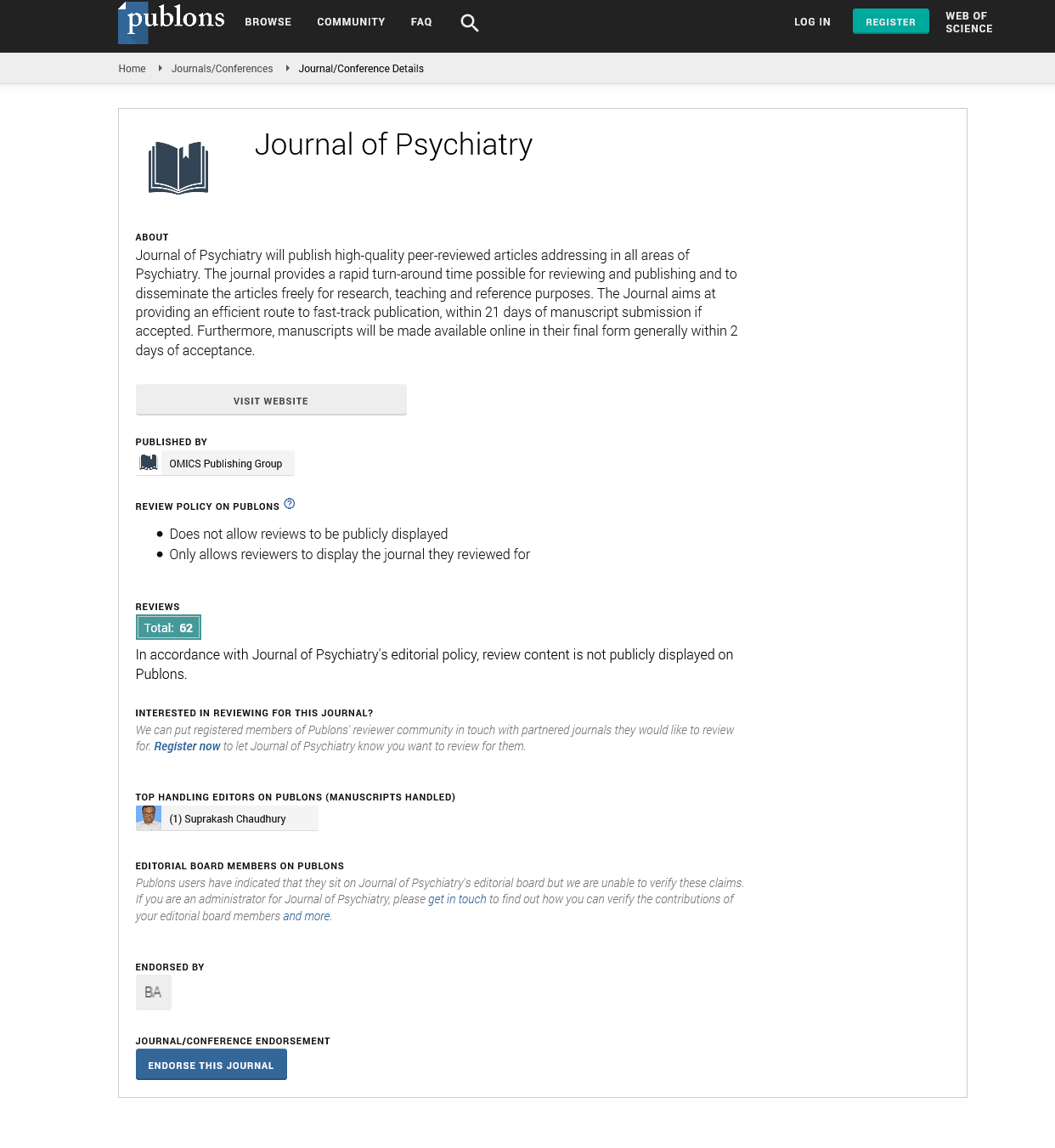Indexed In
- RefSeek
- Hamdard University
- EBSCO A-Z
- OCLC- WorldCat
- SWB online catalog
- Publons
- International committee of medical journals editors (ICMJE)
- Geneva Foundation for Medical Education and Research
Useful Links
Share This Page
Open Access Journals
- Agri and Aquaculture
- Biochemistry
- Bioinformatics & Systems Biology
- Business & Management
- Chemistry
- Clinical Sciences
- Engineering
- Food & Nutrition
- General Science
- Genetics & Molecular Biology
- Immunology & Microbiology
- Medical Sciences
- Neuroscience & Psychology
- Nursing & Health Care
- Pharmaceutical Sciences
Emergency management of adverse effects following aesthetic injections around the eyes
Joint Event on 13th International Conference on Mental Health and Human Resilience Joint Event on 35th International Congress on Vision Science and Eye
April 29-30, 2025 Webinar
Ahmad Nazari
Tehran University of Medical Sciences, Iran
Posters & Accepted Abstracts: J Psychiatry
Abstract:
Background: Aesthetic injections around the eyes, particularly with botulinum toxin type A (BoNT-A) and dermal fillers, have become increasingly popular. However, these procedures carry risks of serious complications, including dry eye syndrome, excessive tearing, ectropion, diplopia, and ptosis. Even more critical are the rare but devastating occurrences of under-eye bags and vision loss following filler injections. Immediate and effective management of these complications is essential to mitigate long-term damage and preserve patient safety. Objectives: The primary objective of this study is to provide a comprehensive review of the causes and treatment protocols for ocular complications arising from BoNT-A and filler injections. The study will also present emergency management strategies for filler-induced blindness, including the identification of early signs, anatomical considerations, underlying mechanisms, and an overview of all available treatment options. Additionally, the study will present two case studies of patients who experienced vision loss following periocular filler injections, detailing their treatment and subsequent outcomes. Method: A detailed review of ocular complications following aesthetic injections was conducted, focusing on BoNT-A-induced dry eye, tearing, ectropion, diplopia, and ptosis, as well as filler-induced under-eye bags and vision loss. Emergency management protocols for filler-induced blindness were developed based on early symptom recognition, anatomical analysis, and a review of treatment mechanisms. The study includes a workup of two cases involving periocular filler injections that resulted in vision loss, with a discussion on the treatment protocols applied and the degree of recovery observed. Results: BoNT-A Complications: Dry eye syndrome was managed with lubricating eye drops and punctal plugs, while excessive tearing required conservative treatment initially, and followed by surgical intervention in severe cases. Ectropion and diplopia were treated with botulinum toxin reversal agents and surgical correction when necessary. Ptosis, particularly of the levator palpebrae superioris, showed improvement with the application of alpha-adrenergic agonist eye drops. Filler Complications: The development of under-eye bags was managed with hyaluronidase injections, resulting in significant improvement in 85% of cases. Vision loss following filler injection was approached with immediate administration of hyaluronidase, retrobulbar injections, and hyperbaric oxygen therapy. Anatomical analysis suggested that retrograde embolization of filler material into the ophthalmic artery was the primary mechanism. The two case studies demonstrated mild to moderate visual recovery following the aggressive application of the proposed treatment protocol, with one patient regaining 30% of visual function and the other 25%.Conclusion: Ocular complications from aesthetic injections are rare but require prompt and precise management to prevent long-term sequelae. This study provides a comprehensive guide to recognizing and treating these complications, emphasizing the importance of early intervention, understanding the underlying anatomical mechanisms, and applying appropriate treatment protocols. The presented case studies underscore the potential for partial recovery even in severe cases, highlighting the critical role of timely emergency response. Keywords: Aesthetic Injections, Botulinum Toxin A, Dermal Fillers, Ocular Complications, Vision Loss, Emergency Management, Hyaluronidase, Retrobulbar Injection, Hyperbaric Oxygen Therapy

